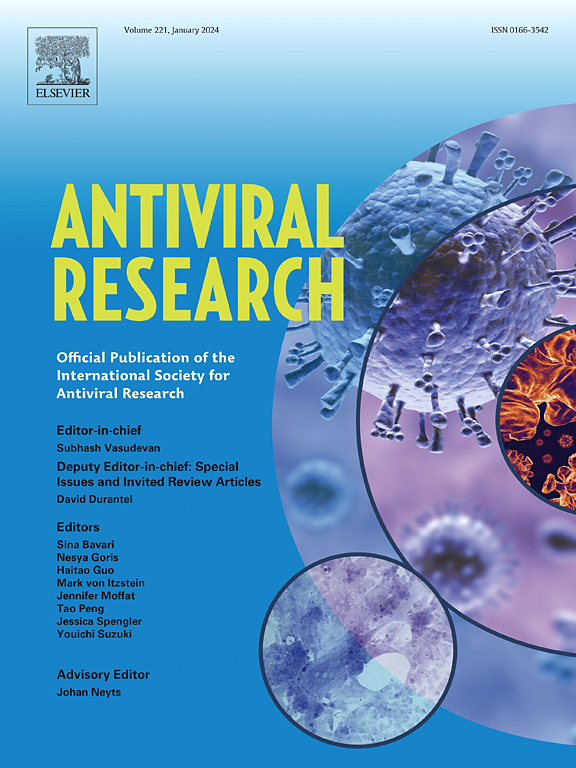Overview on the management of herpes simplex virus infections: Current therapies and future directions
IF 4.5
2区 医学
Q1 PHARMACOLOGY & PHARMACY
引用次数: 0
Abstract
Introduction
Herpes simplex virus type 1 (HSV-1) and type 2 (HSV-2) are highly prevalent, infecting approximately 64 % and 13 % of the world's population, respectively. Traditionally, HSV-1 has been associated with orofacial infections and HSV-2 with anogenital infections, but HSV-1 is increasingly the cause of genital infections. The clinical spectrum of HSV disease ranges from mild cold sores to severe conditions such as encephalitis or systemic infection, particularly in immunocompromised individuals and neonates.
Areas covered
Here we summarize the natural history, epidemiology, manifestations, and treatment options for HSV infections. Current treatments, such as acyclovir, target viral DNA polymerase but have limited efficacy and are susceptible to resistance, especially in immunosuppressed populations. Rescue therapies such as foscarnet exhibit limiting toxicity. Vaccine development has been challenging, and a cure for HSV infection remains distant. Gene therapy is still in its early stages, while novel drugs such as helicase primase inhibitors (HPIs) are emerging as a promising alternative, showing high efficacy and the potential to overcome resistance.
Expert opinion
HPIs represent a significant advance in HSV management. Their safety profile and novel mode of action may provide better viral suppression with a lower risk of resistance, offering hope for better control of the disease.
单纯疱疹病毒感染管理概述:当前疗法和未来方向。
简介:1型单纯疱疹病毒(HSV-1)和2型单纯疱疹病毒(HSV-2)非常普遍,分别感染了约64%和13%的世界人口。传统上,1型单纯疱疹病毒与口腔面部感染有关,2型单纯疱疹病毒与肛门生殖器感染有关,但1型单纯疱疹病毒越来越多地成为生殖器感染的原因。HSV疾病的临床范围从轻微的唇疱疹到严重的情况,如脑炎或全身感染,特别是在免疫功能低下的个体和新生儿中。领域涵盖:在这里我们总结自然历史,流行病学,表现,和治疗方案的HSV感染。目前的治疗方法,如阿昔洛韦,靶向病毒DNA聚合酶,但疗效有限,容易产生耐药性,特别是在免疫抑制人群中。像膦酸钠这样的救援疗法表现出有限的毒性。疫苗开发一直具有挑战性,治愈HSV感染仍然很遥远。基因治疗仍处于早期阶段,而解旋酶引物酶抑制剂(hpi)等新药正成为一种有希望的替代方案,显示出高效率和克服耐药性的潜力。专家意见:hpi代表了HSV管理的重大进步。它们的安全性和新的作用方式可能提供更好的病毒抑制和更低的耐药风险,为更好地控制这种疾病提供了希望。
本文章由计算机程序翻译,如有差异,请以英文原文为准。
求助全文
约1分钟内获得全文
求助全文
来源期刊

Antiviral research
医学-病毒学
CiteScore
17.10
自引率
3.90%
发文量
157
审稿时长
34 days
期刊介绍:
Antiviral Research is a journal that focuses on various aspects of controlling viral infections in both humans and animals. It is a platform for publishing research reports, short communications, review articles, and commentaries. The journal covers a wide range of topics including antiviral drugs, antibodies, and host-response modifiers. These topics encompass their synthesis, in vitro and in vivo testing, as well as mechanisms of action. Additionally, the journal also publishes studies on the development of new or improved vaccines against viral infections in humans. It delves into assessing the safety of drugs and vaccines, tracking the evolution of drug or vaccine-resistant viruses, and developing effective countermeasures. Another area of interest includes the identification and validation of new drug targets. The journal further explores laboratory animal models of viral diseases, investigates the pathogenesis of viral diseases, and examines the mechanisms by which viruses avoid host immune responses.
 求助内容:
求助内容: 应助结果提醒方式:
应助结果提醒方式:


